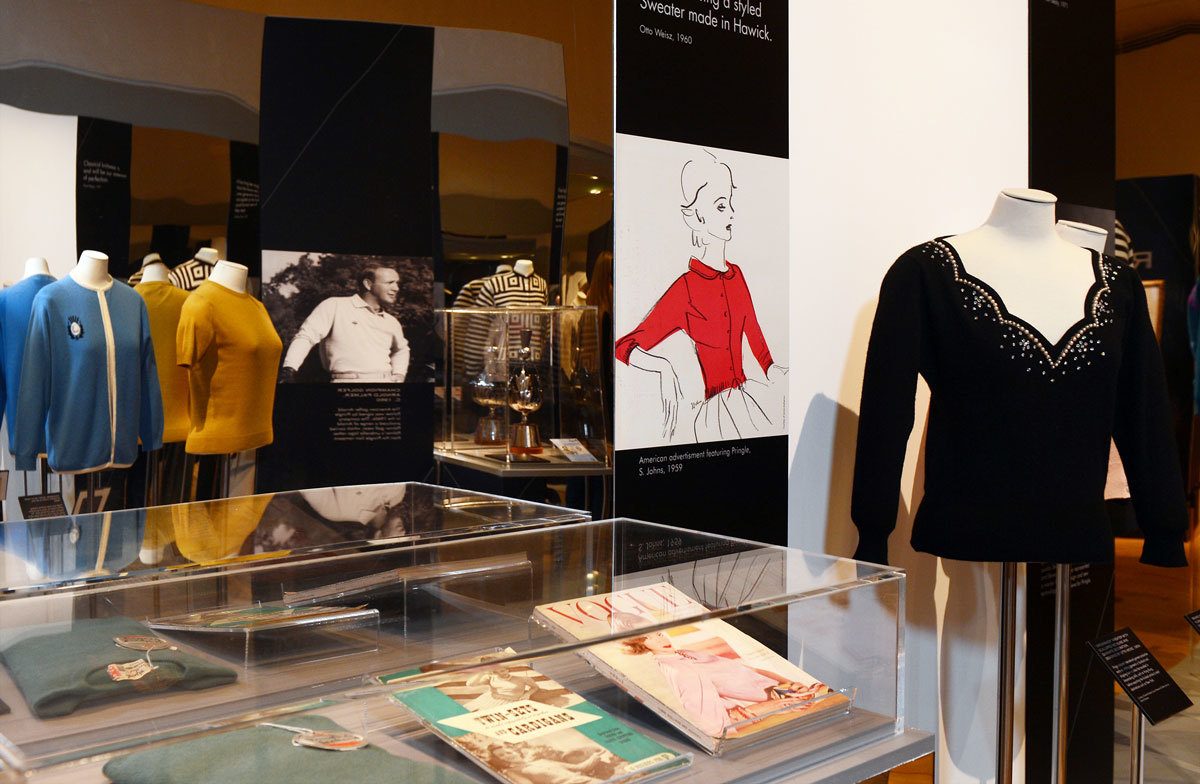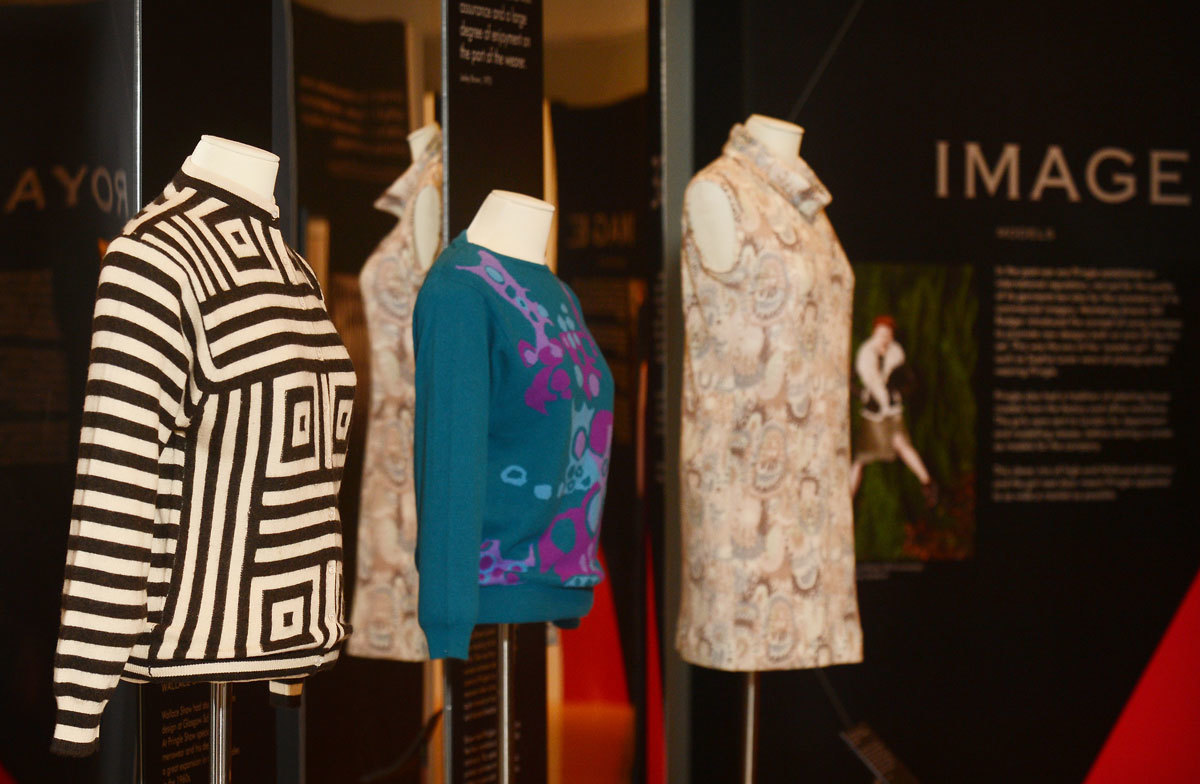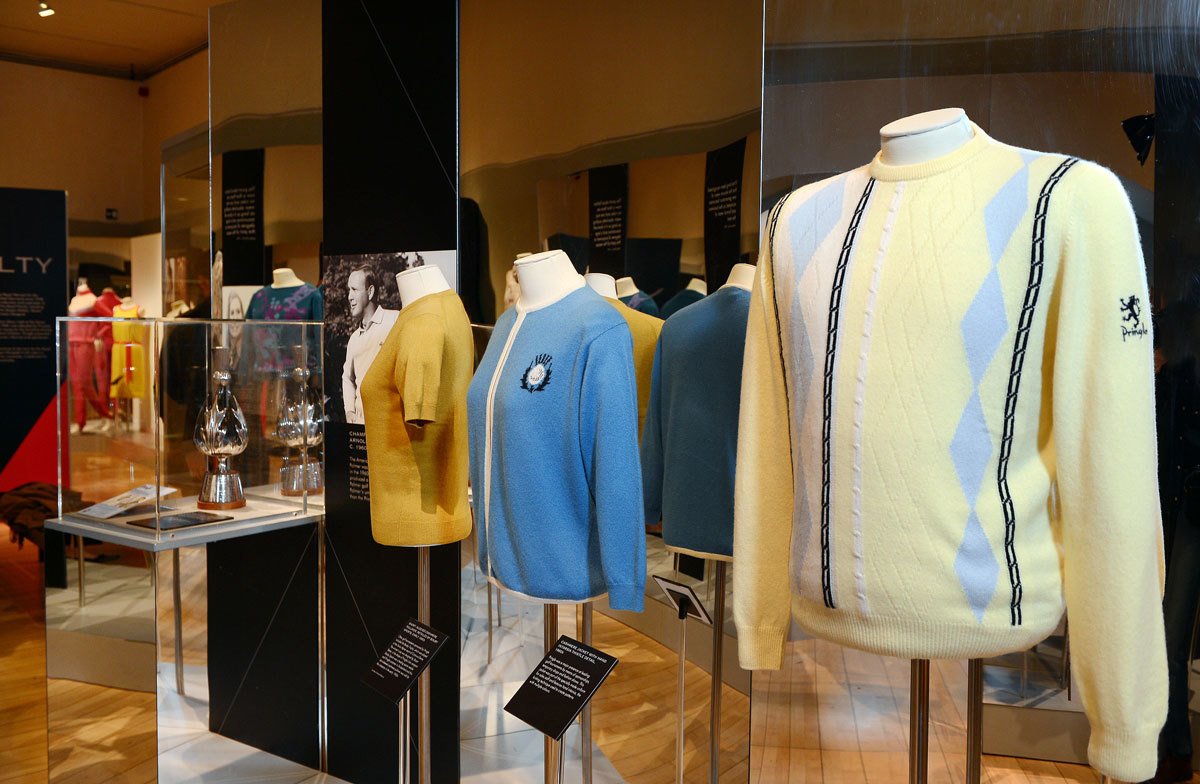A handful of seasons ago, the knit made its triumphant return to the women’s runways. Fuelled by it-jumpers paraded around the street-style-scape by bloggers and other fashion victims, ye olde knit once again found its way back in vogue to do what it always did best: casual modernisation and the liberation that comes with it. If there’s a constant parallel to be found in Pringle of Scotland’s 200th anniversary exhibition, Fully Fashioned, between the history of the heritage knit brand and the knit itself, it’s their mutual influence on the women’s wardrobe through the past two centuries.
Open to the public at the National Museum of Scotland in Edinburgh as of Friday last week, the exhibition – which made a one-day only debut at the Serpentine Gallery during London Fashion Week in February – charts the impressive history of one of the world’s oldest fashion brands, founded by Robert Pringle in 1815. Alistair O’Neil of Central Saint Martins curated the exhibition, and commissioned original works including three films directed by Joe Cohen, of Michael Clark’s dancers, showcasing the movement of knitwear, and visuals by Albert Watson, which double as the Pringle campaign.

“The twinset has such an enduring sense of modernity about it, that it is exciting to be able to set this design classic into a broader context, showing how Scottish knitwear really led the field in modernising the 20th century wardrobe,” O’Neill said at a preview Thursday evening. Three twinsets meet the eye walking into the exhibition, one to illustrate each monumental era of Pringle, from its traditional beginnings to the hi-tech knitology, which defines Creative Director Massimo Nicosia’s contemporary collections for the house.
If the Italian designer’s strict belief in newness and modernity – sometimes even bordering on futurism – sounds like light-years away from Pringle’s highland heritage vibe, Fully Fashioned is testament to the brand’s innate thirst for pushing the boundaries. Most notably, it portrays the reign of designer Otto Weisz and his technical and innovative aspirations, which saw the recruitment of students from Glasgow School of Art, a tradition Pringle has maintained through its strong ties with Central Saints Martins, both via Alistair O’Neill and the late Professor Louise Wilson.
Some of the undisputed highlights of the exhibition – which might come as a surprise to some – are the garments, pictures and letters portraying Pringle’s early understanding of celebrity endorsement. In a letter dated 1947, the Queen thanks Otto Weisz for sending her “so acceptable a present as the selection of cardigans and pullovers”. A photograph from 1959 shows Princess Anne at Balmoral in a Pringle cashmere jumper, the Queen and President Eisenhower hovering behind her. And naturally, Princess Grace of Monaco and Tilda Swinton – the world’s perhaps most profiled Pringle wearers – both make grand appearances.
Fully Fashioned: The Pringle of Scotland Story runs 10 April – 16 August at the National Museum of Scotland.

Credits
Text Anders Christian Madsen
